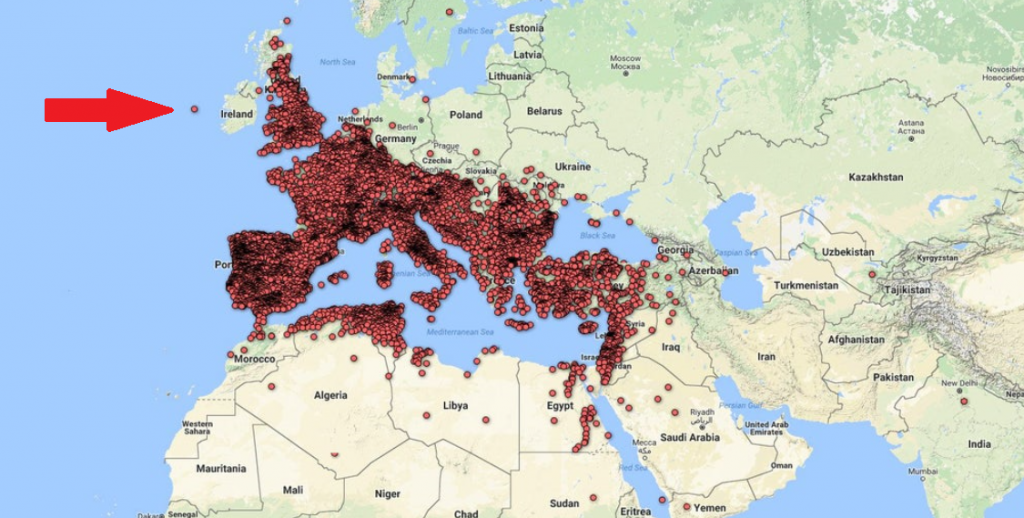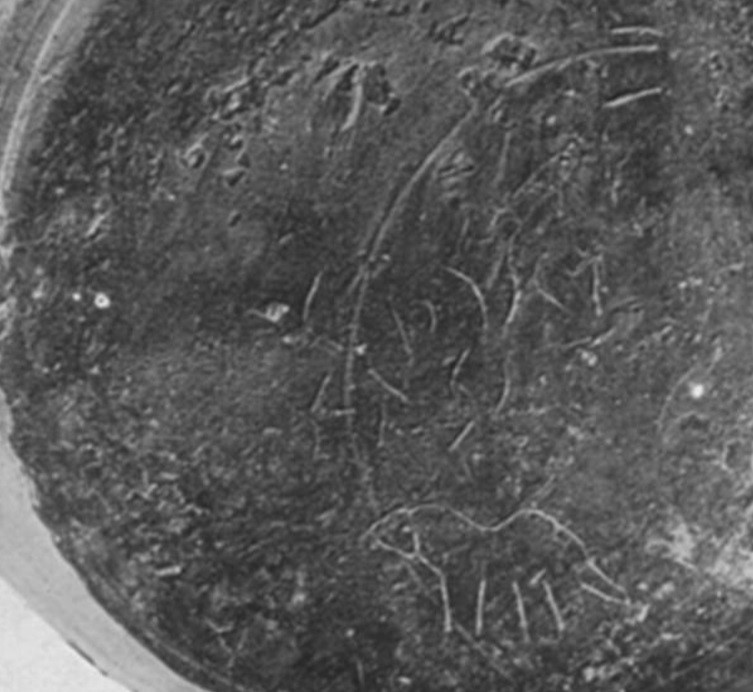The Shipwrecked Otter (possibly) – Maria Pretzler
A few years ago, the Roman epigraphy database mapped all its entries (unfortunately the map doesn’t seem to work any longer). Naturally, I was most intrigued by all the entries on the far edges of the map. This blog post is about the westernmost Roman inscription, which, as it turns out, has a lot more to recommend it than just its location.

In 1933, a trawler from Penarth, South Wales picked up a Roman pot on Porcupine Bank, 150 miles west of Ireland. The pot may have come from a Roman wreck. The find was brought to the museum at Cardiff, and it is still held in storage at the National Museum of Wales. You can admire it on the museum’s website.
The pot has a graffito engraved into its base, in handwriting suggesting a date in the first or second century CE. This is the image published in 1934 (Journal of Roman Studies 1934, plate XXV).

The inscription reads:
C PISCI
FAGI
This was originally interpreted as a Roman name, and a typical ‘this belongs to’ inscription. But the name doesn’t sound right. Caius Piscus Fagus? The animal was originally identified as a bear.
In 1977, George Boon returned to this piece in an article about a Mediterranean anchor found off the coast of North Wales. He asked a zoologist to look at the engraved animal, and got the suggestion that we are looking at an otter. The inscription, he suggests, is a jokey name for an otter, mixing Latin and Greek to read ‘Caius the Fish-Eater’.
So there we have it. The westernmost Roman inscription tells us about a ship with a crew that could make jokes in a mix of Greek and Latin, quite possibly blown off course in the North Atlantic, where the ship sank. A tragic story, then, but otters make everything better, right?

References:
Boon, G.C. (1977), ‘A Greco-Roman Anchor-Stock from North Wales’, 10-30; n.103.
Collingwood, R.G., Taylor, M.V. (1934) ‘Roman Britain in 1933’, JRS 24, 196-221, Inscription number 8, at 220-21, illustration plate XXV
